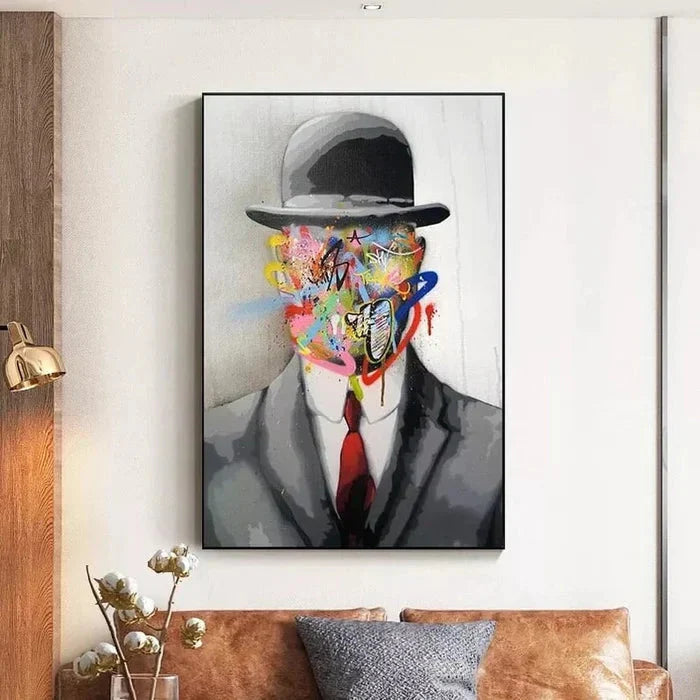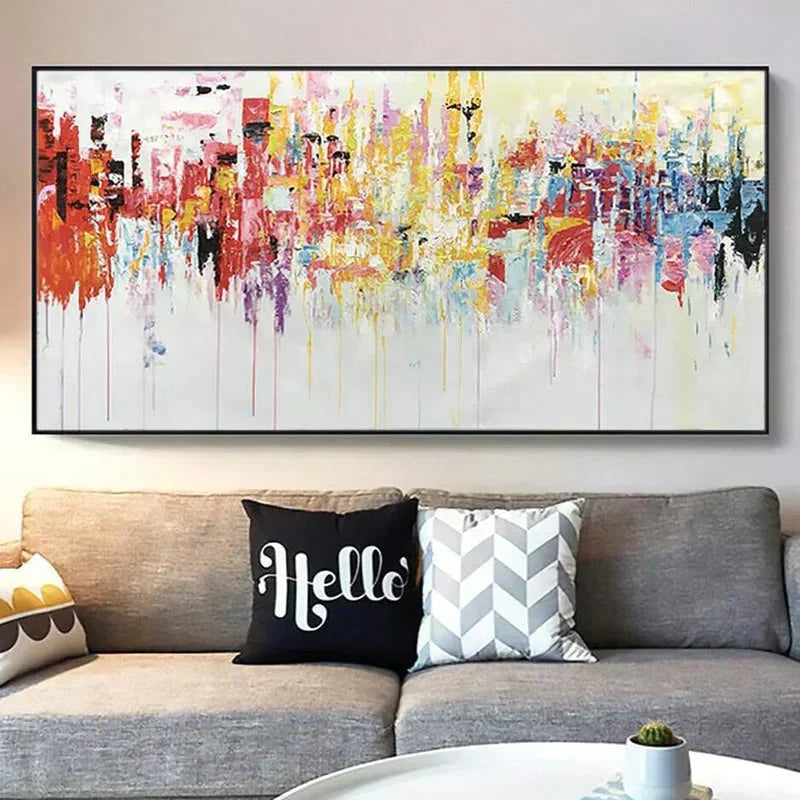Art is a universal language that transcends cultural, linguistic, and temporal boundaries. It embodies the human capacity for creativity, allowing individuals to express thoughts, emotions, and perspectives in countless ways. Over centuries, art has evolved into distinct styles, each defined by its unique techniques, philosophies, and cultural significance. But what exactly defines an art style, and why are they so diverse?
At its core, an art style reflects the techniques, themes, and perspectives artists use to represent their vision. These styles often arise from cultural shifts, technological innovations, and individual experimentation. Understanding different art styles not only deepens our appreciation for art but also inspires creativity in unexpected ways.
Realism: The Art of Precision
Realism, as the name suggests, is an art style that aims to depict subjects as they appear in real life. Emerging in the 19th century, it was a response to the exaggerated emotions and dramatic compositions of Romanticism.
Characteristics of Realism
- Faithful representation of nature and daily life.
- Use of light and shadow to create depth.
- Focus on ordinary people and relatable scenes.
Famous Realist Artists
Artists like Gustave Courbet and Jean-François Millet were pioneers of realism, capturing the essence of the human condition in their works. Courbet’s The Stone Breakers and Millet’s The Gleaners remain iconic examples.
Impressionism: Capturing the Moment
Impressionism emerged in France during the late 19th century as a revolutionary movement. Unlike Realism, it emphasized the fleeting quality of light and color.
Key Features of Impressionism
- Use of loose brushwork and vivid colors.
- Depiction of ordinary scenes and landscapes.
- Focus on the effects of light during different times of the day.
Iconic Impressionist Works
Claude Monet's Impression, Sunrise and Edgar Degas' The Ballet Class are hallmarks of this style, inviting viewers to see the world through a softer, more immediate lens.
Abstract Art: Breaking the Mold
Abstract art challenges traditional forms and narratives by focusing on shapes, colors, and textures. It doesn’t seek to represent reality but rather to evoke feelings and ideas.
Understanding Abstract Art
Abstract art strips down forms to their essential elements, encouraging interpretation and emotion-driven engagement.
How Abstract Shapes Emotions
By moving away from representational forms, abstract art enables artists like Wassily Kandinsky to explore themes like spirituality and music through non-linear visuals
Expressionism: Emotion Over Reality
Expressionism emerged in the early 20th century as a dramatic reaction to industrialization and the alienation of modern life. Rather than focusing on precise representations, Expressionism emphasizes emotional experience over objective reality.
Origins of Expressionism
This movement originated in Germany and was heavily influenced by post-impressionist artists like Van Gogh and Edvard Munch. It sought to convey deep emotional states, often using vivid colors and distorted forms.
Key Artists in Expressionism
- Edvard Munch: Famous for The Scream, a haunting depiction of existential angst.
- Wassily Kandinsky: Known for abstract expressionism, blending emotions with color and form.
- Egon Schiele: Explored human vulnerability through exaggerated poses and stark, bold lines.
Cubism: A New Perspective
Cubism revolutionized art by presenting subjects from multiple angles simultaneously. Founded by Pablo Picasso and Georges Braque, it challenges traditional perspectives and celebrates geometry and abstraction.
Principles of Cubism
- Fragmentation of objects into geometric shapes.
- Limited color palette to emphasize structure.
- Overlapping planes to create a sense of depth.
Pioneers of the Movement
- Pablo Picasso: Works like Les Demoiselles d’Avignon challenged artistic norms.
- Georges Braque: His still-life compositions redefined spatial dynamics in art.
Surrealism: Dreamlike Imagination
Surrealism emerged in the 1920s as an exploration of the unconscious mind. This avant-garde movement sought to bridge reality with dreams, influenced by psychoanalysis and the works of Sigmund Freud.
Themes of Surrealism
- Dream imagery and subconscious symbolism.
- Juxtaposition of unrelated objects to create bizarre, thought-provoking visuals.
- Exploration of human desires, fears, and fantasies.
Iconic works such as the son of man painting by René Magritte perfectly capture surrealism’s challenge to conventional perception. This masterpiece fuses mystery and wit, exemplifying the unexpected beauty found in dreamlike imagery.
For a modern twist on surrealism, explore our banksy balloon girl. This reinterpretation fuses street art edginess with classic surreal inspiration, offering a fresh perspective on familiar themes.
Celebrated Surrealist Artworks
- Salvador Dalí’s The Persistence of Memory, with its melting clocks, is a quintessential surrealist piece.
- René Magritte’s The Son of Man, depicting a man with an apple obscuring his face, challenges perception and reality.
Pop Art: Blurring High and Low Culture
Pop Art flourished in the mid-20th century as a response to consumer culture and mass media. It often incorporates elements of advertising, comic strips, and everyday objects.
The Rise of Pop Art
Emerging in post-war America and Britain, Pop Art celebrated the ordinary and challenged the elitism of fine art by embracing popular culture.
Notable Pop Art Figures
- Andy Warhol: Known for his iconic Campbell’s Soup Cans and Marilyn Monroe portraits.
- Roy Lichtenstein: Used comic strip-inspired techniques, exemplified in works like Whaam!
Minimalism: Less is More
Minimalism is an art style characterized by simplicity and an emphasis on form, color, and space. It rejects ornamentation and seeks beauty in purity and precision.
Philosophy of Minimalism in Art
- Stripped-down forms to focus on the essence of the subject.
- Use of monochromatic palettes and geometric shapes.
- Emphasis on the relationship between viewer and artwork.
Minimalism in Modern Contexts
Minimalism extends beyond art, influencing architecture, design, and lifestyle philosophies, underscoring the idea that "less is more."
Renaissance Art: A Revival of Classical Ideas
The Renaissance was a transformative period from the 14th to the 17th century, marked by a revival of classical Greek and Roman ideals. This era celebrated humanism, proportion, and perspective.
Renaissance Characteristics
- Mastery of anatomy and realistic proportions.
- Use of linear perspective to create depth.
- Themes of mythology, religion, and human experience.
Masterpieces of the Era
- Leonardo da Vinci’s Mona Lisa and The Last Supper.
- Michelangelo’s David and the Sistine Chapel ceiling frescoes.
Street Art: A Voice for the Masses
Street art is a contemporary form of public expression that transcends galleries and museums. It often serves as a tool for social commentary and activism.
Street art pushes creative boundaries and captures the pulse of urban culture. Experience this dynamic spirit with banksy colored rain, a striking piece that epitomizes the rebellious edge of contemporary street art.
Evolution of Street Art
From graffiti in urban spaces to elaborate murals, street art has grown into a globally recognized and respected form of artistic expression.
Legendary Street Artists
- Banksy: Known for his politically charged and satirical stencils.
- Shepard Fairey: Creator of the iconic Hope poster for Barack Obama’s campaign.
Digital Art: Art in the Digital Age
The advent of technology has given rise to digital art, a medium that blends creativity with innovation. From 3D modeling to virtual reality, digital art is reshaping the creative landscape.
Tools and Techniques in Digital Art
- Software like Adobe Photoshop, Illustrator, and Procreate.
- Digital painting, vector art, and animation.
- Use of blockchain technology to create and sell NFTs.
The Growing Popularity of NFTs
Non-fungible tokens (NFTs) are revolutionizing how art is bought and sold, providing artists with new platforms to showcase their work.
How to Choose an Art Style
Finding the right art style is an essential journey for any artist. Whether you’re drawn to the precision of realism or the freedom of abstract art, exploring various styles helps you discover your creative voice.
Exploring Your Personal Preferences
- Reflect on what inspires you: nature, emotions, or societal issues?
- Experiment with different mediums and techniques.
Tips for Beginners in Art
- Start with basic techniques and build foundational skills.
- Take inspiration from iconic artists but infuse your own unique perspective.
Conclusion: The Diversity of Artistic Styles
The world of art is a vibrant mosaic of styles, each offering a unique way to interpret the human experience. Whether you’re captivated by the dreamlike realms of surrealism, the structured elegance of cubism, or the dynamic innovation of digital art, there’s something for everyone to appreciate and explore. Art is not just a reflection of culture but a powerful medium for connection and expression. Embrace the diversity, and perhaps, find your own artistic voice within it.



Leave a comment
This site is protected by hCaptcha and the hCaptcha Privacy Policy and Terms of Service apply.